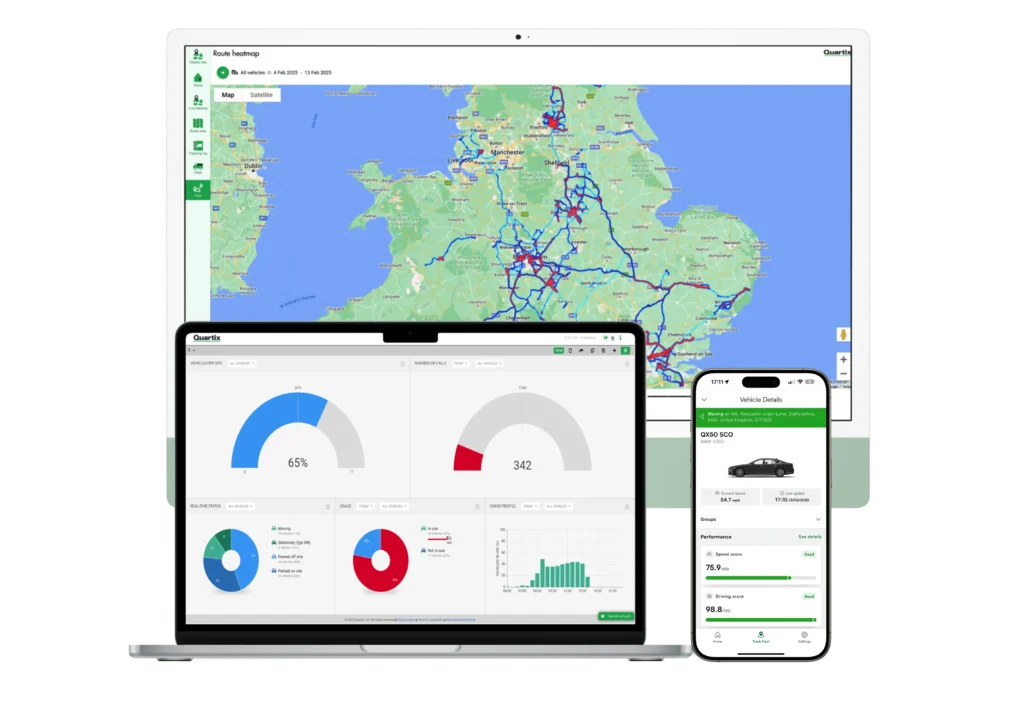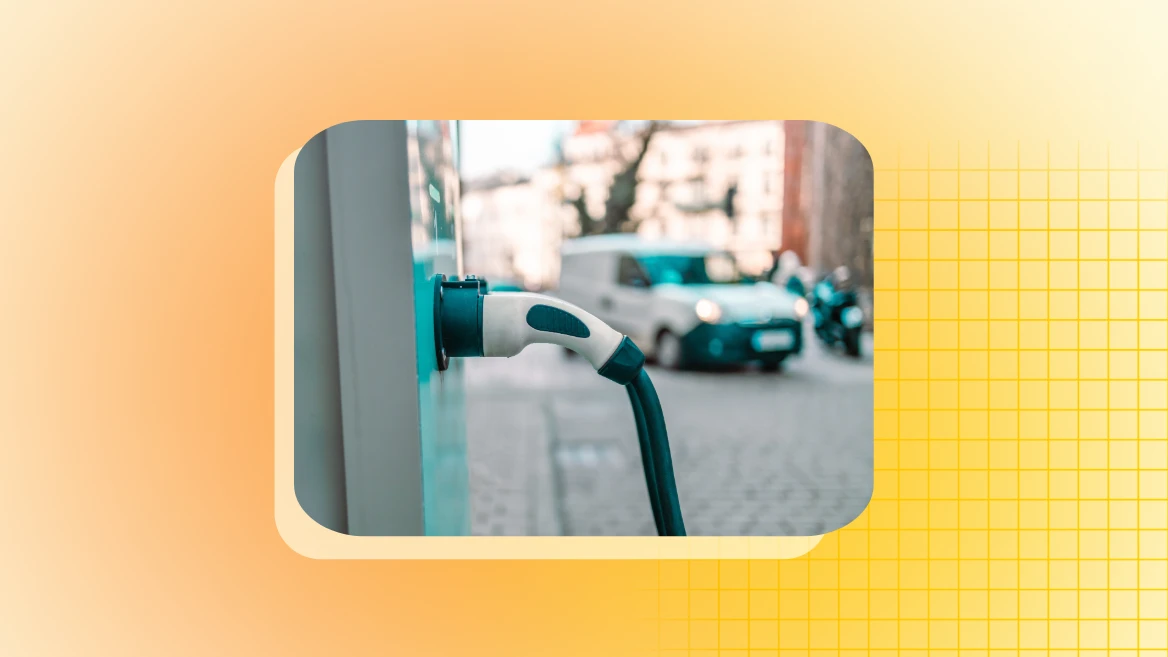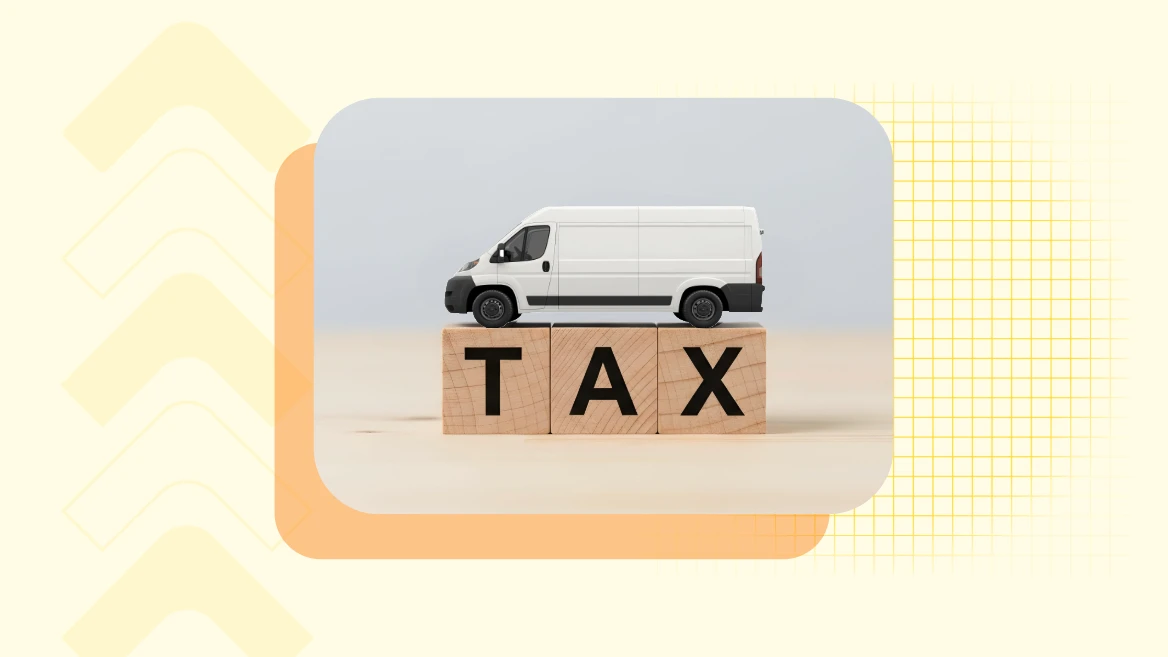For couriers, a vehicle tracking system isn’t just a nice-to-have; it’s often the difference between securing a job and missing out.
With tight margins, time-sensitive deliveries and opportunities to stand out as the obvious choice for your customers, it pays to have smart fleet tracking tools in place.
The benefits are vast – from displaying your location in real time on platforms like CX, to reducing fuel and insurance costs, avoiding disputes, and showing customers that you care. GPS tracking suggests that your courier business is reliable and professional, and that you keep a close eye on your operations.
But with so many vehicle tracking systems out there, how do you pick the right one?
What we’ll cover
Get access to 15,000+ courier loads a day on Courier Exchange
Be your own boss. Set your own hours. Make your own money.
Tech that solves real problems
Depending on how many vehicles you run, you probably don’t need all the bells and whistles of an advanced fleet management system.
But certain fleet tracking tools can transform your daily work.
Look for the features you genuinely need for your courier business:
- Live tracking: Essential for reassigning last-minute owner-driver jobs, appearing as nearby in CX searches so you are matched to potential work, and giving customers accurate ETAs.
- Proof of delivery and route verification: Quickly resolve disputes with timestamped records of drop-offs and routes taken.
- Mileage and journey times: Useful for billing, expenses like courier VAT, and compliance. Some systems allow separation of business and personal mileage and track daily driving hours.
- Multi-drop route planning: Cut down mileage and fuel use by sequencing jobs efficiently and securing profitable backhaul work.
- Geofencing alerts: Get notified when vehicles enter chargeable zones like ULEZ, or when they arrive at key customer sites.
- Driver behaviour monitoring: Promote safer driving, reduce speeding fines, and keep fuel costs and courier van maintenance costs down.
- Engine idling insights: Spot unnecessary engine use while waiting to load or unload.
- Vehicle safety checks: Capture regular inspection reports to flag issues before they turn into costly repairs.
Top tip: Focus on the key features you’ll actually use – ignore unnecessary extras. For multi-vehicle setups, tools like ‘show nearest vehicle to postcode’ can be especially helpful for quick job allocation.

Choose vehicle tracking features that fit your day-to-day work
A vehicle tracking system should support how you actually run your business, not make things harder. From setup to daily use, flexibility matters.
Pick hardware that suits your setup
There’s no one-size-fits-all when it comes to GPS tracking devices.
- Hardwired trackers are fitted by an engineer and work well for long-term vehicles.
- Plug-in devices connect to the OBD port and are ideal for leased or short-term vans. You can install them yourself and move them between vehicles.
If your drivers share vehicles, look for a Driver ID add-on like an RFID card or fob. It tracks who was driving each time, helping with accountability.
Also, check if the vehicle tracking system is built for your size of operation. Some tools are geared towards large fleets, and might be overkill for a solo courier or small business. Go with a provider who gets your working style.
Make sure mobile access works for you
Most systems have mobile apps, but not all apps are equal.
Some only offer limited features, while others give full dashboard access. If you’re often on the move, you’ll want to:
- View live locations
- Check trip history
- Get alerts or status updates
Try out the mobile version to see how easy it is to use. It should feel just as practical as the desktop view.
Check integration and data control
If you’re using Courier Exchange, look for tracking systems that can link directly with your CX account, such as Quartix and other providers with telematics integration. This can simplify how you manage availability and track proximity to loads.
Other handy integrations to look for include:
- Fuel card platforms
- Route planning tools
- Payroll or timesheet systems
- Vehicle inspection apps
- Fleet dashcams
And don’t forget data control. The provider should be GDPR-compliant and give you clear answers on:
- What’s tracked and stored
- Who owns the data
- How to export or delete it
Some systems even let you pause tracking during non-working hours or manually switch it off, which can be useful for personal trips or tax tracking.
Know the costs and keep control of your contract
Vehicle tracking systems should give you more freedom – not lock you in. Before you commit, check the full cost and what happens when your contract runs out.
Know what you’re paying for
Vehicle tracking costs can vary. It’s not just about the monthly fee: there may be setup and add-on costs that soon add up.
Make sure you’ve checked:
- Whether hardware is included or extra
- Monthly subscription terms and length
- Add-ons like alerts, reports, or dashcams
- Installation and removal charges
- Reinstallation fees for new vehicles or lost devices
- Cancellation and support charges
Once you’ve got the full picture, weigh this against the time and money you could save. Even small gains in admin time, routing, or customer service can cover the cost.
Pro tip: Ask for a free trial. Using your own data can help you see the benefits clearly. You can also request case studies to get a feel for the return others have had.
Watch out for auto-renewals
Some contracts renew automatically unless you cancel months in advance. It’s easy to miss this if the clause is hidden in the small print.
Ask for:
- Clear contract terms with no hidden fees
- Short contract options with the ability to scale up or down
- Simple cancellation policies
If it’s hard to leave, there’s usually a reason. A good provider won’t rely on lock-ins, they’ll keep you by offering real value.
Plan for growth and track your progress
A vehicle tracking system should do more than meet your needs today. It should support your goals in the long run and show you what’s working.
When comparing providers, ask yourself:
- Will this system still suit me if I expand from two vans to thirty?
- Can I add or remove vehicles easily?
- Are there options to include new features like dashcams?
- How easy is the system to use day to day?
Some suppliers offer flexible packages, while others charge extra for changes. It’s worth reading customer reviews and case studies to see how long users stay with them—and how helpful their support is.
But even the best tracking system needs to deliver results. So before you get started, make sure you’ve got a baseline:
- Fuel spend, mileage, and maintenance costs
- Job wins, admin time, and customer feedback
- Complaints, failed deliveries, or speeding fines
These are all areas a good vehicle tracking system can help you with. Check back regularly to see where you’ve made progress. Some systems even flag when targets are missed—like not hitting your usual number of delivery stops by midday.
A good supplier won’t just sell you a system. They’ll help you get something from it.
Compare your options and take your time
When you start a courier business and are picking a tracking system, pick a supplier that ticks all the right boxes for you. Here’s a quick summary of what to look out for:
- Live vehicle tracking and proof of delivery
- Mobile access
- Flexible install & driver ID options
- Integration with Courier Exchange and other key systems
- Transparent costs & short contracts
- GDPR compliance and privacy features
- Responsive support
- ROI tracking tools
This checklist can also double as your vendor comparison tool – tick off features as you go. And remember, a good vehicle tracking provider will offer a no-obligation demo or trial – so don’t be afraid to ask.
Test 2-3 providers in real scenarios, such as:
- Delivery disputes
- Assigning urgent pickups
- Logging mileage
- Comparing routes
You can also compare prices on Expert Market.
The right system pays for itself
With the right vehicle tracking provider, your business can work smarter, save money, and win more high-value courier jobs. Whether you’re a small business or managing a growing team, choosing carefully now avoids headaches later.
If you’re exploring vehicle tracking options for your courier business, take a look at how the Quartix vehicle tracking system can help improve efficiency and boost profits. With over 20 years’ experience supporting small to mid-sized businesses in delivery and transport, and a direct integration with Courier Exchange, Quartix helps you get more value out of every mile.
Get access to 15,000+ daily loads on Courier Exchange
Be your own boss. Set your own hours. Make your own money.
Vehicle tracking FAQs
How does vehicle tracking help me win more jobs on Courier Exchange?
With live vehicle tracking, your van shows up as ‘nearby’ when shippers search for drivers. This makes it easier to get matched to last-minute jobs—especially when you’re on the road and not checking the platform constantly.
Do I need a fleet to benefit from a vehicle tracking system?
Not at all. Many systems are designed for solo couriers or small businesses. Look for plug-in trackers, mobile access and tools that suit your day-to-day setup. You don’t need a big fleet to work smarter.
What should I check before signing a contract?
Watch out for auto-renewal clauses and hidden fees. Ask about contract length, cancellation policies, and total setup cost, including installation and reinstallation. A good supplier will give you clear answers and flexibility.
Can vehicle tracking reduce my fuel and maintenance costs?
Yes. Many systems include features like driver behaviour monitoring, engine idling alerts and route planning tools. These can help cut down fuel waste, reduce wear and tear, and spot issues before they become repairs.
Is my data safe with a vehicle tracking provider?
As long as the provider is GDPR-compliant, your data should be handled securely. You should always know what’s being tracked, who owns the data, and how to delete or export it if needed.



